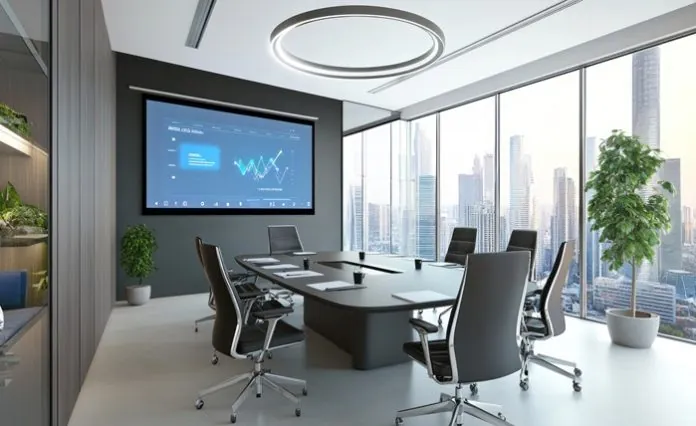
Conference tables play a central role in any business setting, serving as the hub for meetings, brainstorming sessions, and decision-making. Whether you are designing a corporate boardroom or a collaborative workspace, this conference room essential sets the tone for productivity, professionalism, and creativity. Here are some of the most common table styles you will find in meeting spaces.
Rectangular Conference Tables
A rectangular conference table is a classic and widely used design in office settings. Their long, linear shape allows for maximum seating, making them ideal for larger groups. This style is highly versatile and can be found in many different materials, including modern glass/metal and traditional wood. These tables also make it easier to maintain eye contact across the table, creating a more structured environment.
Rectangular tables with extended lengths are perfect for large boardrooms or corporate offices, as they offer ample space for presentations, video conferencing, and document sharing. Modern rectangular designs often incorporate power outlets and cable management systems to support technology during meetings.
Round Conference Tables
Round tables have grown in popularity due to their collaborative nature. Without any “head” of the table, everyone is on equal footing, making them ideal for fostering open communication and teamwork. The table encourages discussion and allows for a more intimate atmosphere compared to rectangular tables.
Round tables are typically best for smaller groups and work well in more casual settings or creative brainstorming spaces. Their shape is perfect for a meeting environment where collaboration and interaction are key. Additionally, they are often more flexible when it comes to space and can be used in various room layouts without feeling too imposing.
Boat-Shaped Conference Tables
Boat-shaped tables are a hybrid design that combines the sleekness of a rectangular table with a slight curve on the ends, resembling the shape of a boat. This style is often chosen for its unique aesthetic and functionality. The curve allows for better sightlines, meaning participants sitting at the ends can easily interact with those sitting along the sides. Boat-shaped tables also tend to have a more formal and sophisticated appearance, making them a common choice for high-level meetings and executive offices.
These tables work well in medium-to-large conference rooms where a balance of formality and collaboration is required. Like rectangular tables, they can also be equipped with technology features, including built-in power outlets and HDMI ports.
U-Shaped Conference Tables
This style works best for high-level presentations, training sessions, or any meeting requiring a focal point at the center of the table. The “U” shape allows for one central space where a presenter or speaker can stand while everyone else has an unobstructed view. This configuration also allows for easy movement and flexibility, with seating on the arms of the “U” or around the open side for more informal discussions.
The U shape promotes communication among participants while keeping the focus on the leader or presenter. The table is commonly used in larger settings, such as in corporate training rooms or in high-level strategy meetings where interaction is vital.
Conclusion
The right conference table style is essential for creating an effective and comfortable meeting space. Whether you’re going for a formal boardroom aesthetic, a collaborative workspace, or something in between, the table you choose should not only reflect your company’s values but also cater to the dynamics of your meetings.
